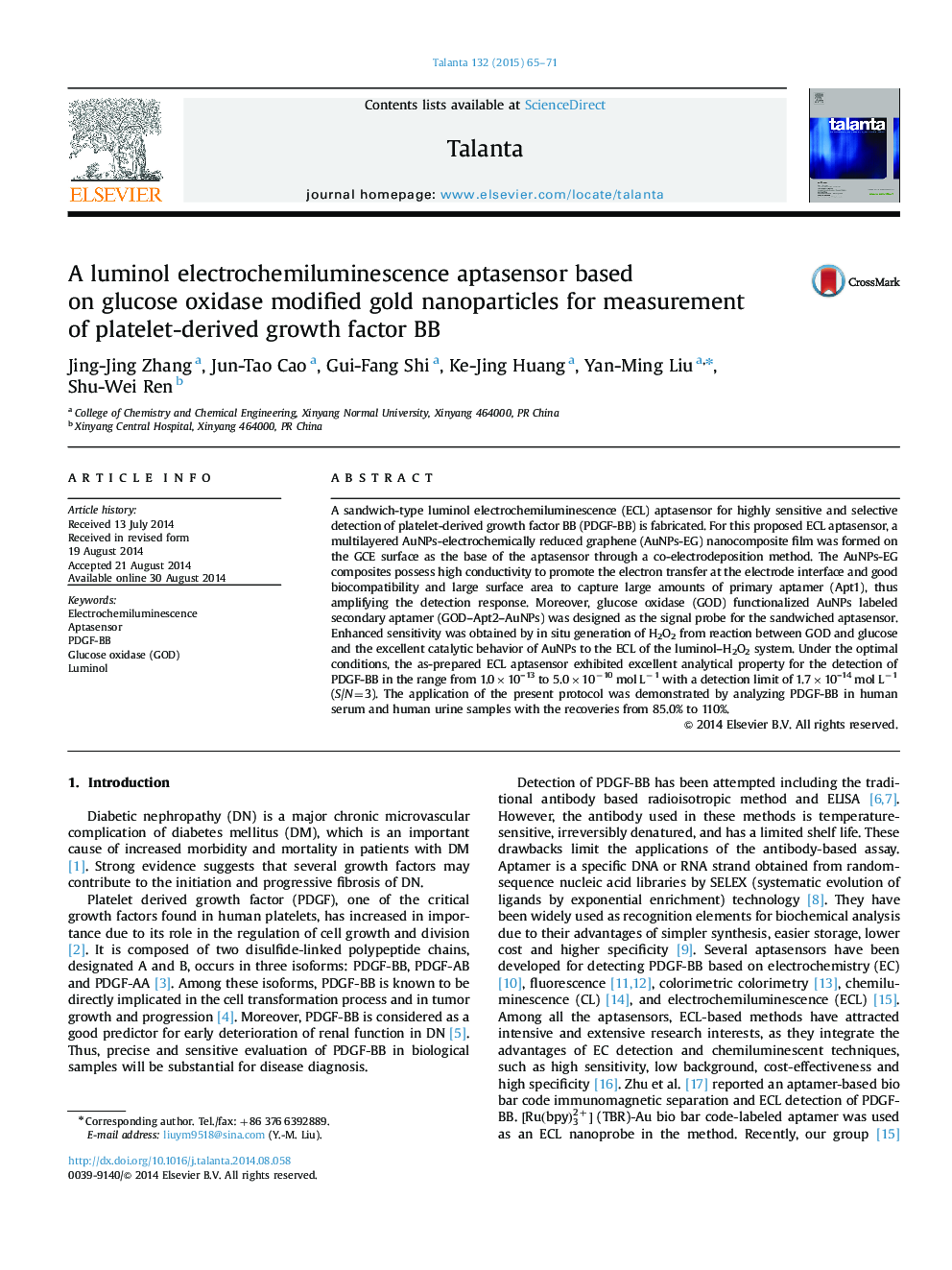| Article ID | Journal | Published Year | Pages | File Type |
|---|---|---|---|---|
| 1241989 | Talanta | 2015 | 7 Pages |
•A sandwich type ECL aptasensor for PDGF-BB detection was developed.•AuNPs-EG was used as matrix and GOD–Apt2–AuNPs was designed as the signal probe.•Electrochemiluminescence of luminol was enhanced by GOD and AuNPs.•The aptasensor exhibits highly selective, highly sensitive and acceptable stability.•The aptasensor has good response in complicated human serum and human urine samples.
A sandwich-type luminol electrochemiluminescence (ECL) aptasensor for highly sensitive and selective detection of platelet-derived growth factor BB (PDGF-BB) is fabricated. For this proposed ECL aptasensor, a multilayered AuNPs-electrochemically reduced graphene (AuNPs-EG) nanocomposite film was formed on the GCE surface as the base of the aptasensor through a co-electrodeposition method. The AuNPs-EG composites possess high conductivity to promote the electron transfer at the electrode interface and good biocompatibility and large surface area to capture large amounts of primary aptamer (Apt1), thus amplifying the detection response. Moreover, glucose oxidase (GOD) functionalized AuNPs labeled secondary aptamer (GOD–Apt2–AuNPs) was designed as the signal probe for the sandwiched aptasensor. Enhanced sensitivity was obtained by in situ generation of H2O2 from reaction between GOD and glucose and the excellent catalytic behavior of AuNPs to the ECL of the luminol–H2O2 system. Under the optimal conditions, the as-prepared ECL aptasensor exhibited excellent analytical property for the detection of PDGF-BB in the range from 1.0×10–13 to 5.0×10−10 mol L−1 with a detection limit of 1.7×10–14 mol L−1 (S/N=3). The application of the present protocol was demonstrated by analyzing PDGF-BB in human serum and human urine samples with the recoveries from 85.0% to 110%.
Graphical abstractFigure optionsDownload full-size imageDownload as PowerPoint slide
